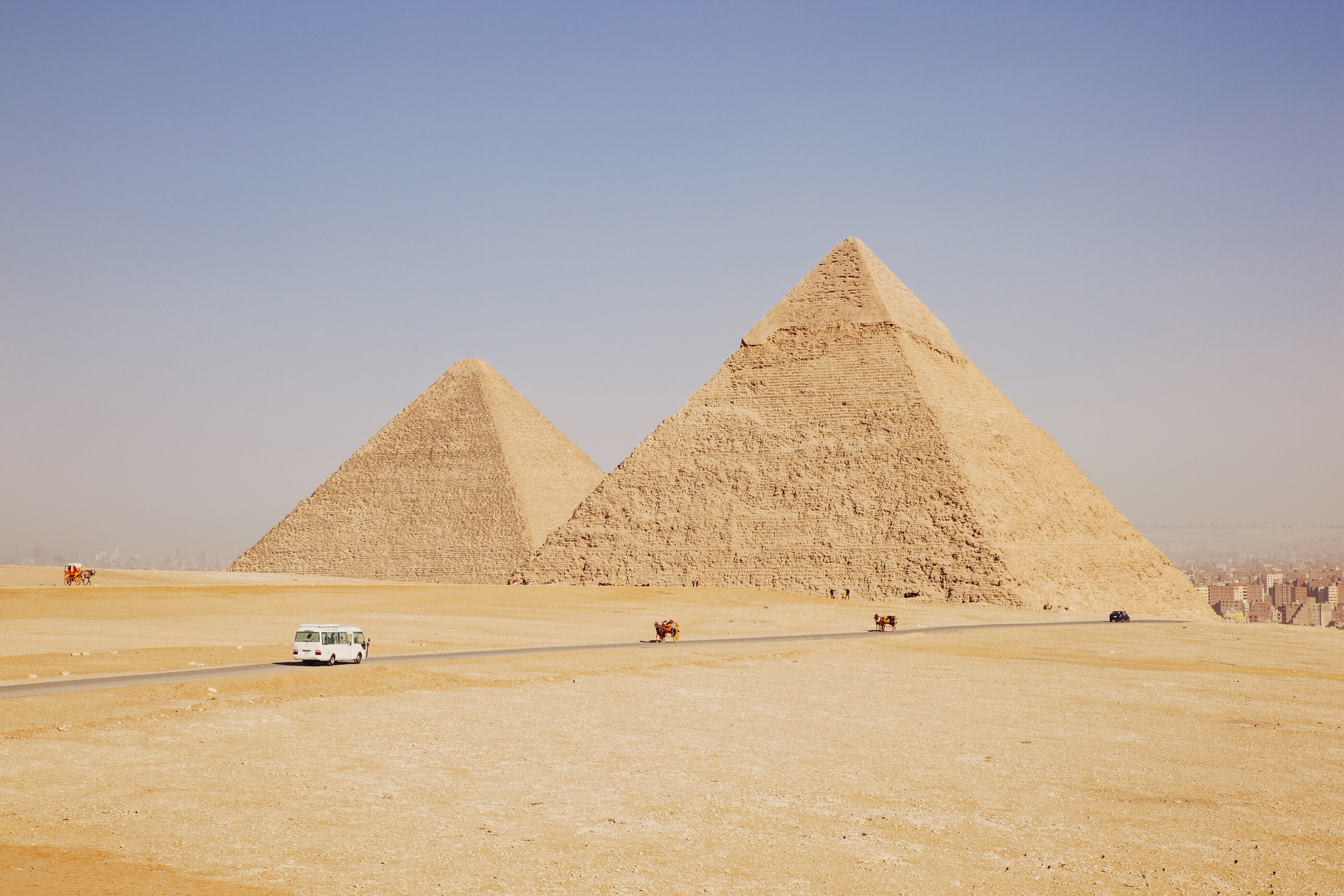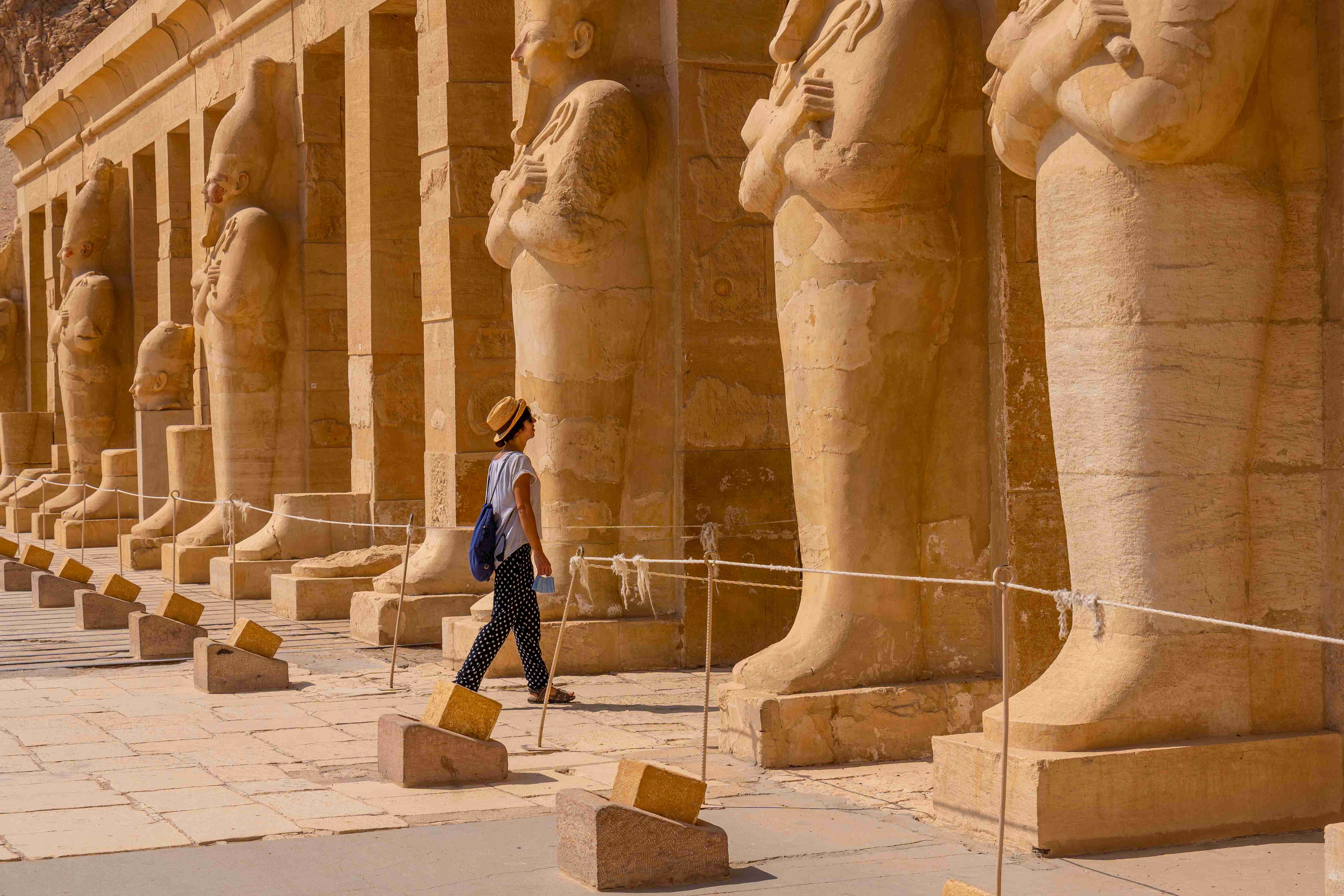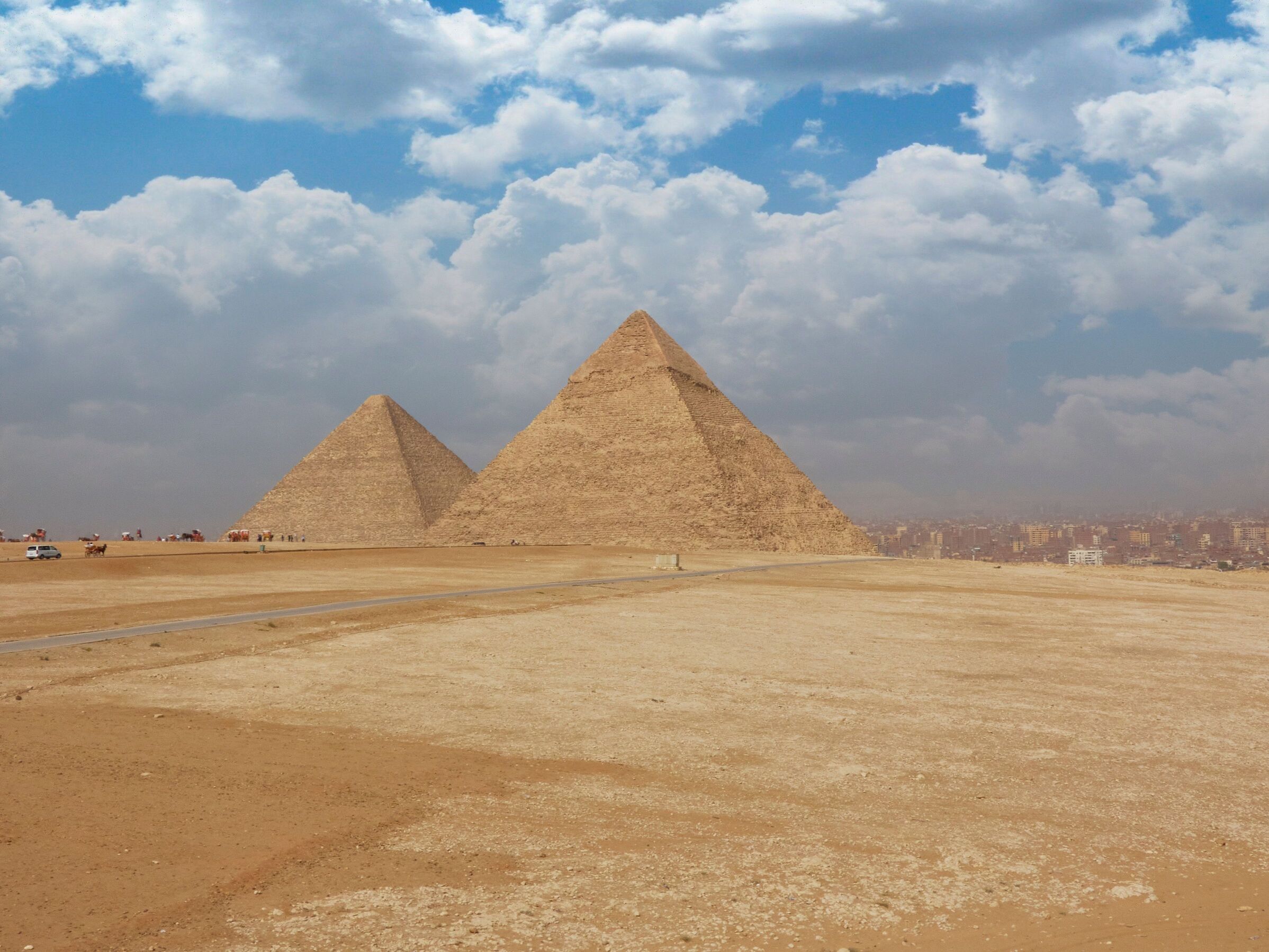
Beyond Giza … The True Number of Pyramids in Egypt
Beyond Giza lies the mystery of the Pyramids in Egypt
The iconic trio of pyramids at Giza leads many to believe they know everything about Egyptian pyramids. However, the actual number of pyramids in Egypt would surprise most people.
The Great Pyramid of Giza draws global attention, but Egypt is home to dozens of lesser-known pyramids scattered across the landscape. Counting these ancient monuments presents an ongoing challenge, as archaeological teams continue discovering new pyramid sites, reshaping our understanding of Egypt's pyramid count.
Are You Sure You Know How Many Pyramids in Egypt?
Egypt has far more pyramids than most people realize. While the iconic pyramids of Giza are world-famous, they represent only a fraction of the pyramids dotting the Egyptian landscape. The total number of pyramids reflects the various stages of pyramid construction and development over centuries.
Let’s embark on a journey beyond the Giza Plateau to uncover Egypt’s hidden pyramid treasures. We’ll explore pyramid fields across the country and examine recent archaeological discoveries. The answer to the ultimate question awaits: just how many pyramids stand in this ancient land?
Counting the Pyramids in Egypt
The number of pyramids in Egypt remains a fascinating puzzle for archaeologists and historians. These magnificent structures range from the renowned pyramids at Giza to lesser-known ruins scattered throughout ancient burial grounds. Each new discovery adds another piece to this extraordinary puzzle.
Dahshur Red Pyramid
Dahshur showcases the evolution of pyramid architecture through remarkable structures. The Red Pyramid, soaring 105 meters high, stands as Egypt's first successful true smooth-sided pyramid. Nearby, the Bent Pyramid intrigues with its unique angle shift midway through construction. Adding to Dahshur’s grandeur, the Black Pyramid of Amenemhat III is notable for housing both the pharaoh and his queens within a single structure.
The Abusir necropolis presents another fascinating collection of pyramids. Its most prominent monument, Neferirkare’s Pyramid, rises 52 meters at the highest point of the necropolis. Sahure’s Pyramid, located nearby, introduced an architectural template combining a main pyramid with connected mortuary and valley temples—an innovation that influenced pyramid construction throughout the 5th and 6th Dynasties.
The Lisht pyramid field highlights the ingenuity of 12th Dynasty builders. Senusret I’s pyramid experimented with a new construction method using radiating stone walls that created 32 compartments filled with stone and rubble. Though ultimately unstable, this technique reflected ongoing advancements in pyramid engineering.
At Abu Rawash, Djedefre’s pyramid broke tradition by placing all chambers beneath the structure using a "pit and ramp" method. Meanwhile, at Illahun, Senusret II’s pyramid was uniquely built on a rock outcrop, featuring a yellow limestone core.
Hawara and Mazghuna mark the later stages of pyramid development, where builders continued to push architectural boundaries even as pyramid construction declined. Each of these sites tells a distinct chapter in Egypt’s architectural history, showcasing the diversity of building techniques and styles across different dynasties.
Egypt's Pyramid Secret is More than You Ever Imagined
The Pyramid of Meidum brought a major advance as Egypt's first straight-sided pyramid attempt. The builders filled the steps with limestone to create smooth sides, though this experimental design started as a step pyramid. The project ran into stability problems because they built it on sand instead of solid rock.
Djoser’s architectural breakthrough set the stage for remarkable advancements in Egyptian pyramid construction. His successor, Sekhemkhet Djoserty, sought to surpass him with the Buried Pyramid, but due to his short reign, the structure only reached a height of 8 meters.
Near Zawyet El Aryan, the Layer Pyramid introduced a unique five-step design, though only two steps remain visible today.
A major leap forward came with the Pyramid of Meidum, Egypt’s first attempt at a true straight-sided pyramid. Builders filled the steps with limestone to create smooth sides, though the structure initially began as a step pyramid. However, stability issues arose as it was constructed on sand rather than solid rock, leading to its partial collapse over time.
Saqqara Pyramids
The story of Egyptian pyramids begins in the 3rd Dynasty with a groundbreaking achievement—the Step Pyramid of Djoser. Standing 62.5 meters tall, it marks the dawn of Egypt’s monumental stone architecture. The structure evolved from an initial square mastaba into a six-stepped monument with intricate underground chambers.
Saqqara, a vast necropolis, holds multiple pyramids that showcase diverse building techniques and varying heights. The Pyramid of Teti, now eroded into a mound, once stood at 52.5 meters. The Pyramid of Pepi I, matching this height, is notable for its green-painted hieroglyphic texts and star-decorated ceilings, adding a unique artistic element to its design.

The Untold Story of Egypt's Hidden Pyramids
These remarkable pyramids showcase an incredible variety in their construction:
-
The Headless Pyramid (Netjer-isut-Menkauhor) at Saqqara—Named by the ancient Egyptians, though much of its structure remains lost.
-
The White Pyramid at Dahshur—still largely unexplored by archaeologists.
-
The Southern Saqqara Pyramid—Features one of the most complex subterranean systems ever built.
Some pyramids highlight fascinating architectural experiments. The Pyramid of Senusret I introduced a groundbreaking technique using radiating stone walls to form 32 separate compartments. The Black Pyramid made history as the first designed to house both a pharaoh and his queens under one roof.
Unfinished pyramids tell their own stories. The Northern Pyramid of Zawyet El Aryan, likely built by Djedefre, reveals ancient construction techniques with its distinctive T-shaped shaft. The Pyramid of Shepseskare remains little more than a leveled square with a T-shaped ditch, abandoned early in construction.
Other pyramids stand out for their unique purpose. The Pyramid of Ibi, at just 21 meters tall, is the smallest. The Southern Mazghuna Pyramid remains a mystery, as its builder is unknown. Some structures served symbolic rather than funerary roles—such as the Pyramid of Ahmose, which functioned as a cenotaph with no burial chamber beneath its limestone exterior.
Unearthing Egypt's Pyramid Count
A closer look at ancient Egypt’s architectural heritage reveals a vast array of pyramids spread across diverse necropolises. From towering monuments to more modest structures, these remarkable edifices collectively narrate the full story of Egypt’s pyramid-building era.
How many Pyramids are there in Egypt?
Archaeological research has uncovered approximately 118 ancient Egyptian pyramids, each with its unique size and design. Towering above them all, the Great Pyramid of Giza stands at 146.7 meters, a testament to ancient engineering mastery.
Not all pyramids were colossal. The Pyramid of Ibi, at just 21 meters, proves that grandeur wasn't always the goal. Meanwhile, the Pyramid of Ahmose served as a ceremonial monument rather than a tomb, lacking underground burial chambers beneath its limestone exterior.
Advancements in construction are evident in the Pyramid of Senusret III at Dahshur. This 78-meter structure features a mudbrick core encased in fine white Tura limestone. Nearby, the Black Pyramid introduced new design concepts but suffered structural failures.
Many pyramids remain shrouded in mystery. The builder of the Southern Saqqara Pyramid is unknown, yet its intricate underground passages rank among the most complex ever discovered. The Northern Mazghuna Pyramid’s ownership is debated, though some believe it belonged to Sobekneferu, one of Egypt’s rare female pharaohs.
Time has not spared all pyramids. The Pyramid of Khendjer, once 37.3 meters tall, is now barely a meter high. Even unfinished projects, like Shepseskare’s Pyramid, provide insight into ancient construction methods with their abandoned foundations and T-shaped ditches.
From towering monuments to smaller structures, these pyramids showcase the incredible range of ancient Egyptian architecture. Each one deepens our understanding of this remarkable civilization, its engineering prowess, and its cultural values.
Finding Egypt's Hidden Pyramid Treasures
Sneferu’s ambitious projects elevated pyramid construction to new heights. His Bent Pyramid at Dahshur reflects the adaptability of ancient Egyptian engineers; when structural issues arose, they altered the angle midway, giving the pyramid its distinctive ‘bent’ appearance. Learning from these challenges, Sneferu went on to build the Red Pyramid, the first fully successful smooth-sided pyramid, setting the stage for future monumental achievements.
Giza Plateau Pyramids
Khufu's Great Pyramid of Giza marks the pinnacle of pyramid construction. Rising 146.7 meters, it held the record as the world’s tallest human-made structure for over 3,800 years, until Lincoln Cathedral surpassed it in AD 1311. Later dynasties continued pyramid building with varying success. Amenemhat III’s Black Pyramid introduced an innovative design to house both the pharaoh and his queens but suffered structural failures. By the 5th and 6th Dynasties, pyramids became more standardized, typically reaching 52 meters in height and featuring sacred inscriptions on their chamber walls.

They aren't just moments; it's an adventure into the history of a great civilization, where every unearthed stone tells a unique story. Join us as we journey through time and reveal the staggering scope of Egypt's pyramid mystery.
Egypt’s pyramids extend far beyond the iconic trio at Giza. Over centuries, archaeologists have uncovered 118 pyramids across the country, each telling a unique story of architectural mastery and cultural significance. While the Great Pyramid of Giza soars to 146.7 meters, the modest Pyramid of Ibi stands at just 21 meters, demonstrating the diverse purposes these structures served, from royal tombs to ceremonial monuments.
Ancient Egyptian ingenuity is evident in their evolving designs, from Djoser’s groundbreaking step pyramid to Sneferu’s smooth-sided architectural triumphs. Yet, the story is far from complete. Beneath Egypt’s desert sands, undiscovered pyramids may still await, promising to reshape our understanding of this extraordinary civilization.
These monuments are more than relics; they are a testament to human ambition and innovation. Join us as we journey through time, exploring the mysteries and marvels of Egypt’s legendary pyramids.
Related Articles

Uncover the Ancient Egypt Treasures
Where the Past Comes to Life. Egypt is frequently regarded as the birthplace of civilization because of its majesty and mystique. With fascinating stories of pharaohs, colossal structures, and unimaginable wealth, it has a rich history spanning thousands of years. The wonders of ancient Egypt that have enthralled tourists for centuries will be revealed on this voyage for those who wish to visit the top archaeological sites in Egypt.

The True Story of Stunning Dahshur Red Pyramid in Egypt
The Dahshur Red Pyramid stands tall in Egypt's desert sands.

Top Mysteries Facts about the great Pyramids of Giza
The Great Pyramid of Giza stands as humanity’s most mysterious architectural triumph.
